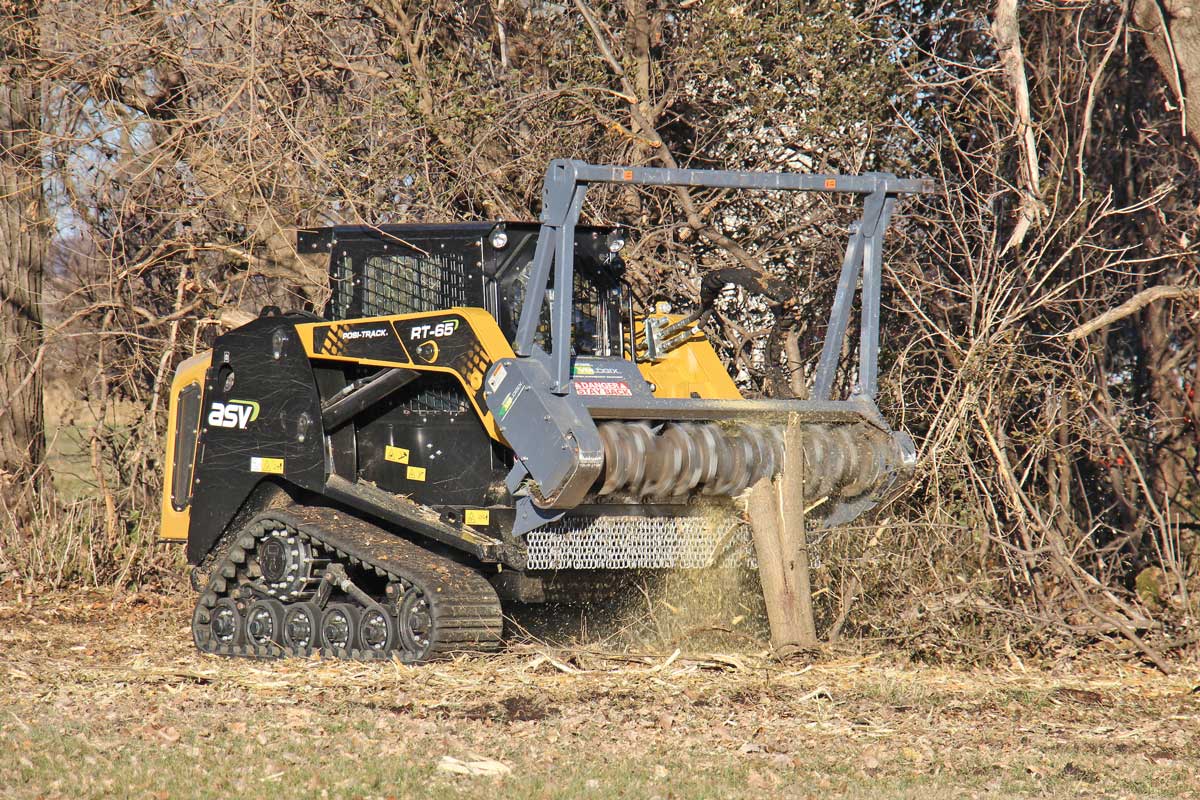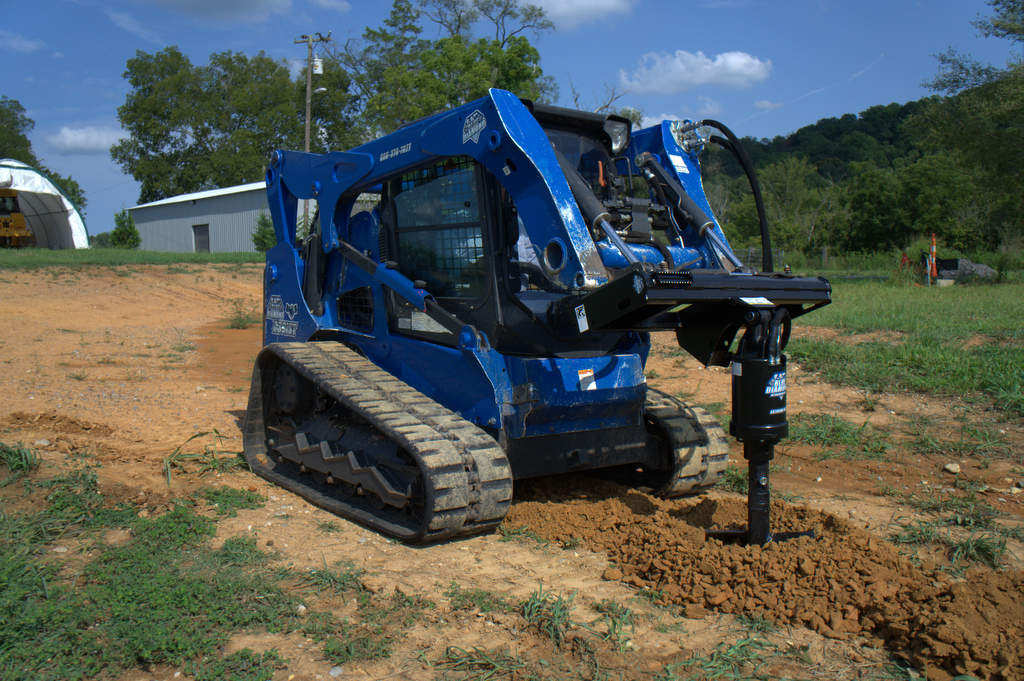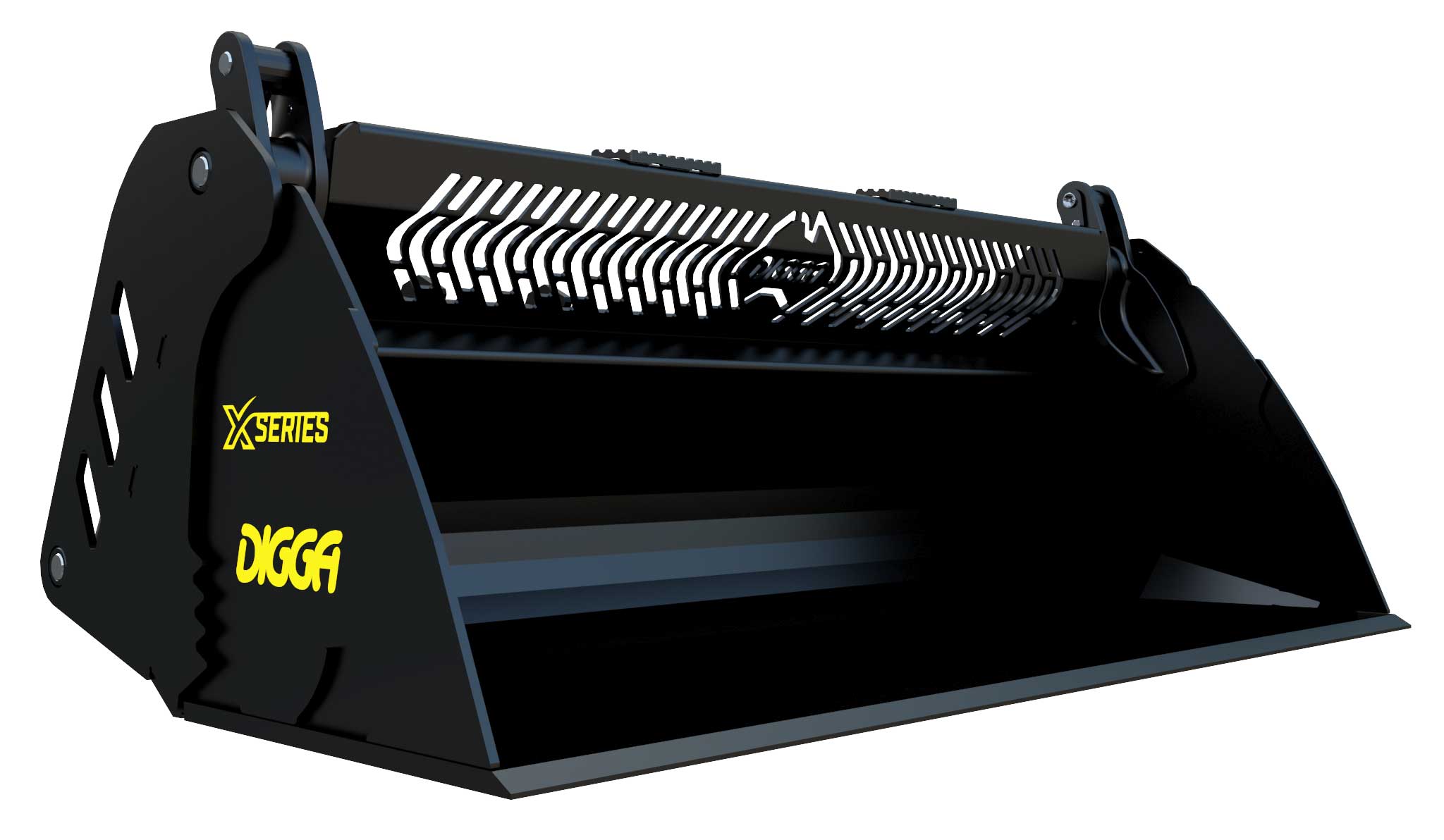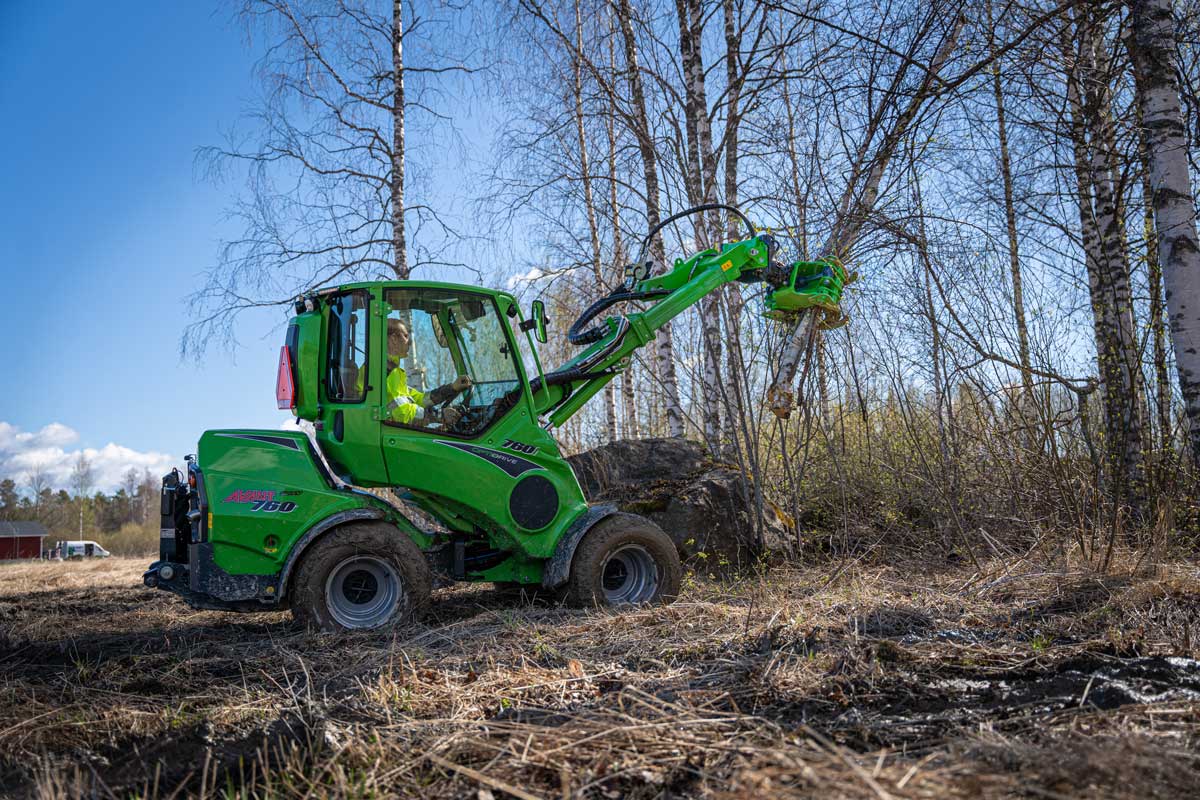Tips for Pairing Your Mini Skid Steer with a Brush Cutter
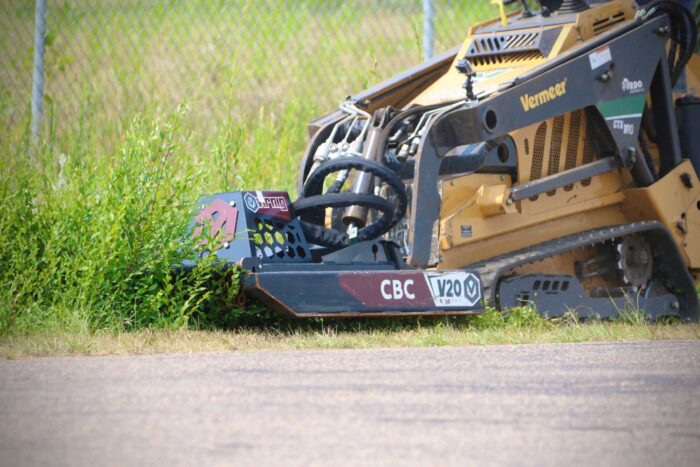
Mini skid steers are built to deliver big productivity in a small, easy-to-maneuver package. These super versatile machines fit where larger units can’t, help reduce manual labor and take on a large variety of hard-working attachments. Everyone — from landscapers and contractors to tree care crews and property managers — can benefit from a mini skid steer. Add in a brush cutter attachment and your mini skid steer transforms into an efficient land-clearing machine.
“The pairing makes sense for anyone maintaining trails, ditches, fence lines or residential properties where maneuverability is key,” says Tyler Monson, product manager for Virnig. “It’s perfect for tight-access jobs like backyards, trails and fence lines where a full-size machine can’t fit. It’s also ideal for residential lot cleanup or rental customers who want a lighter, less intimidating machine that’s easy to transport. With lower ground pressure, it clears brush and saplings while minimizing turf damage, making it the go-to choice when maneuverability matters more than raw power.”
When looking at a brush cutter, key considerations include cutting width, deck size and hydraulic flow requirements. It’s important to select a brush cutter that matches your machine’s capabilities so it runs efficiently without overloading. Another consideration is what type of material you will be cutting. That will help you choose between an open front or closed front deck.
“If you are primarily cutting grass and light brush, a closed-front style brush cutter will be best, as it will help mulch the material more finely,” says Landon Greenhalgh, general manager of Skid Steers Direct. “Conversely, if you will primarily be cutting thick brush and small trees, an open-front brush cutter is your best choice, as they allow larger material to make contact with the blades more squarely, resulting in a cleaner cut on larger branches and pieces of brush.”
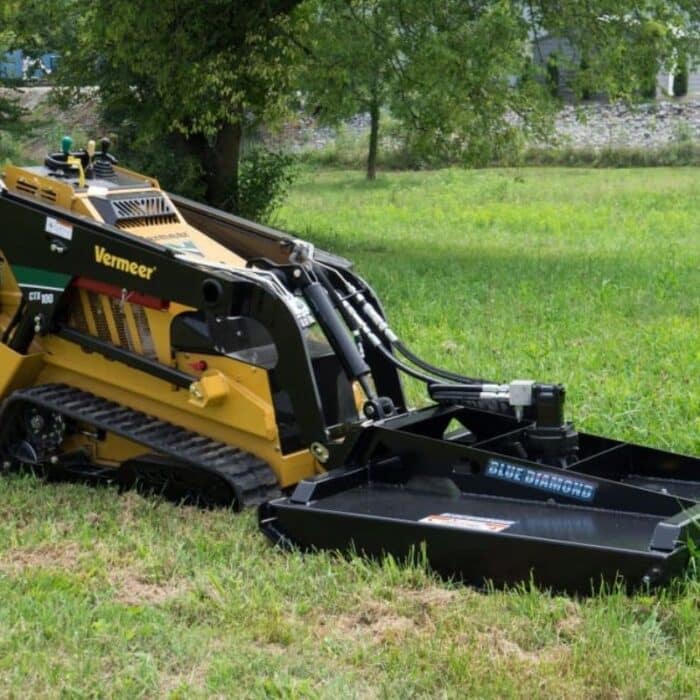
Mounting compatibility should be considered. Monson notes that mini skid steer mounting interfaces can differ between brands, so it’s important to verify if the cutter mount will attach to your machine. Durability and the availability of replacement parts are also essential since brush cutters are high-impact attachments.
“Durability features like heavy-duty blades, reinforced decks and easy maintenance access are important,” says Kevin Murphy, key account manager at Blue Diamond Attachments. “These ensure the attachment holds up to tough jobs and delivers a clean, consistent cut.”
As for cost, a brush cutter attachment can range from $4,000 to $10,000. The price depends on factors such as width, build quality, motor configuration and other features. Rental is also an option.
“Renting and owning are both popular options, depending on the amount of use they have for the unit,” says Trey Thompson, president of Star Industries. “A construction crew might rent for clearing land for development, while a landscaping crew would be likely to own a brush cutter for ongoing use.”
Safety First
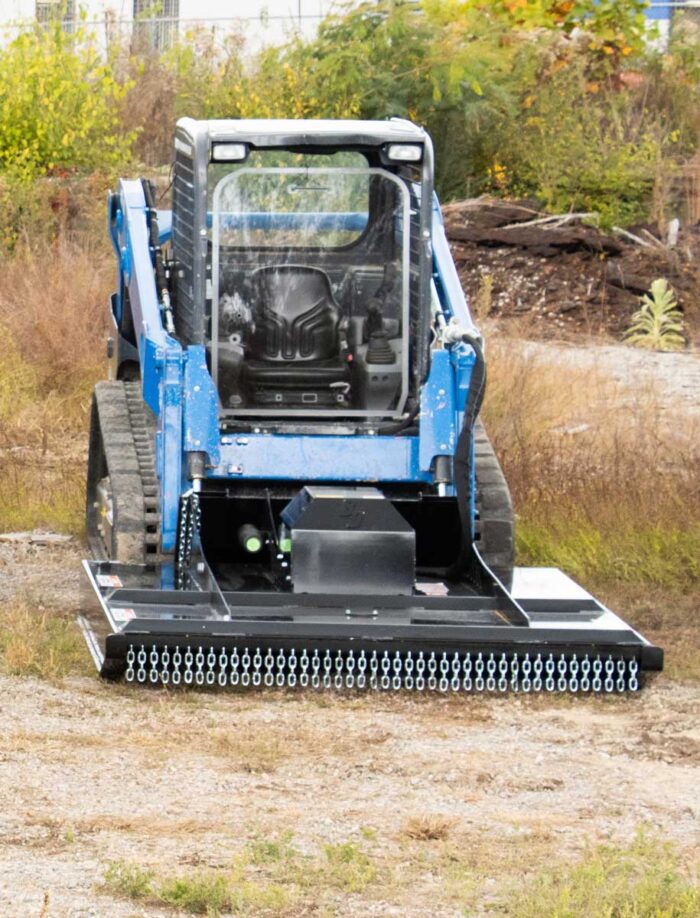
Before operating a brush cutter, it’s important to become familiar with its operator’s manual, as well as the jobsite and who may be working around the machine. Operators should inspect the machine and attachment prior to using them to ensure everything is secure and functioning correctly. Don’t forget the proper PPE.
“Operators should always read the manual, walk the work area beforehand and clear loose debris that could become a projectile,” says Monson. “Maintain a safe distance from bystanders and never operate near traffic or structures without proper barriers. PPE typically includes, but is not limited to, safety glasses, hearing protection, gloves, long pants and steel-toed boots. A safety helmet is recommended when working around trees or overhead hazards.”
When using the attachment, operators should approach whatever they’re cutting from the side versus from above.
“Do not try and pancake brush using the center of the blade carrier,” explains Murphy. “Make use of the blades to cut material by feeding horizontally and be aware of where material is discharging — debris can ricochet.”
When work is done, operators should make sure the mini skid steer and brush cutter are shut down and stored properly.
“Before dismounting the mini skid steer, make sure to lower the attachment to the ground, turn off the cutter and engage the parking brake if available,” says Greenhalgh. “Shut off the mini skid steer’s engine and remove the key. Allow the brush cutter blades to come to a complete stop before approaching or servicing the brush cutter.”
Maintenance Matters
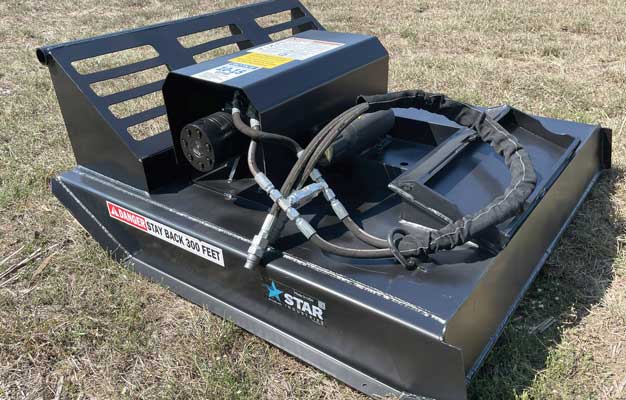
Just like any machine-attachment combo, regular maintenance is important to keep both your mini skid steer and brush cutter running efficiently. This involves following the manufacturer’s maintenance schedule and completing the tasks on time. Thompson from Star Industries offers this maintenance schedule for consideration:
Before each use:
- Check the mini skid steer’s hydraulic fluid level. Add fluid as necessary.
- Check that all fasteners — nuts, bolts, washers, pins and keepers — are in place. Tighten as necessary.
- Inspect and replace any worn, torn or missing safety decals.
- Inspect hydraulic plumbing (hoses and connectors) for damage or leakage. Repair or replace hydraulic items as necessary.
- Check the condition of cutter blades. Sharpen or replace as necessary. You should also check these weekly and annually.
Weekly:
- Check the oil level in the gear box motor. Add fluid as necessary.
- Wash the brush cutter.
Annually:
- Change the oil in the bearing housing. Change oil after 50 hours of first-time use and then every 1,000 hours or yearly.
- Check the brush cutter for major scratches and dings. Sand and repaint these areas to prevent rust damage. Use paint that’s formulated for farm equipment, which can be found at your local hardware store.
Pam Kleineke is managing editor of Compact Equipment.

